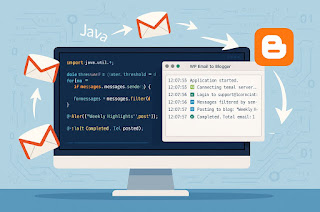1)What is the difference between a loop and a repeat?
Ans.
1) For Loop we need to give the input as document. for repeat
we need to give the input as number
2) Along with above answer, ideally loop will exit by default
after completing all iterations corresponding to no.of
documents in document list.
repeat will exit onfaiulre/sucess condition
3) Loop and Repeat both are used to execute child steps.
Repeat : Repeat is a conditional based flow step. The execution of child steps will be depends on "REPEAT ON" value( SUCESS / FAILURE in property panel).
Loop : You should perform a loop operation on array of items(String list/Document list/Object list). Loop operation process each and every array element in the array. you have to give the input array value.
2)What is scope?
Ans.
Scope Property is used to restrict flow step to access only the elements of a IData Object.For Example if document x
has elements x1,x2,x3,lets say for flow Map step we set the scope as X when the control is in map step we can do
operations only on x1,x2,x3.
3)If v want to run the server with some other port number , what v need to do ??
Ans.
Developer:
1) We need to copy the Integrationtionserver path where the
IS resides & rename it.
2) Go to IS admin.
3) click Ports tab under security
4) Go to Add port & select (webmethods/http)
5) Go to change primary port select the port & update it
4)What are the different ports in IS
Ans.
There are 10 different type of ports in IS
1) 5555
2) 6666
3) 7777
4)8888
5)9999
5)If i have to move packages from one IS to another,wmDeployer?
Ans.
If we want to move any one or two packages publish/subscribe is ok. If we want to do code migration
the best is to use wMDeployer.
2) You can do it in 2 ways.
1. wmDeveloper.
2. Admin Console
DEVELOPER : You can copy and paste or drag and drop a package from one server to other.
From Admin console : We can do this by replicating a package and then send or Publish the package to another server.
To do this you should be a member of Replicator ACL.
6)Which process would u suggest, is it through wmDeployer or someother processes like publish/subscribe?
Ans.
7)Can u explain about trading networks?
Ans.
A trading network is a set of organizations that have agreed to exchange the business documents. A webMethods
Trading Networks is a component that runs on webMethods Integration Server. Trading Networks enables your
enterprise with other companies and market places to from a business-to-business trading network.
8)How to configure sap adapter 4.1?
Ans.
9)We can do that same by using java also ,then why do we use webmethods please send me the answer
1)
Java is a language. While webMethods is a tool. webMethods provides lots of build-in services as loke the
API in java.For using the API, in java again we need to wrie some codes.But in webMethods they are providing the drag and drop
facilities. so its a time consuming process.
Apart from this webMethods supports lot of functionality like publish\subscribe, portal developement, brokers etc...
2)
When you can walk, why you need Bike? or if you've bike, do you need car?
Java is a language while webMethods is specialised tool with many built in functions/feature to support guaranteed
deliveries, transaction tracking, resubmissions, data transformation, SOA, Event Management, web service, File,
EDI, JDBC, SAP, JDE, JMS, MQ Series, integration with multiple applications on multiple platform.
If you'd to do all of that by yourself in Java, you'll look at years to develop full proof solution that webMethods can
provide you out of box. As they say, don't reinvent the wheel.
10)I am using Wenmethods 7.1 since many years. I am on Webmethods project. Today my Boss asked me about CLSRIM (Webmethods service, when one server is down, automatically another will take over. Can you please throw some light on above ?
Ans.
1)You can look at load balancing and clustering part of the webmethods .
2) Its possible with veritas clustering system(VCS)...coordinate with UNIX admins regarding this
11)HOw to handle exceptions in webMethods?
Ans.
To handle exceptions in webMethods, we use three sequencce step as below -
First sequence (exit on success)
- second sequence (exit on failure)
- third sequence (exit on done)
Second and third sequences are child steps of first one.
all the business login will come inside second sequence and
what we have to do when exception is there, this logic will
come in third sequence.
12)what is a dictionary?
Ans.
A flat file dictionary contains record definitions, field definitions, and composite definitions that can be used in
multiple flat file schemas.And also if we want to creat a record which dont have a header we can create it thru Dictionary giving it a name
recordWithNoID.
Posted 15th February 2013 by Saurabh Sharma



No comments:
Post a Comment